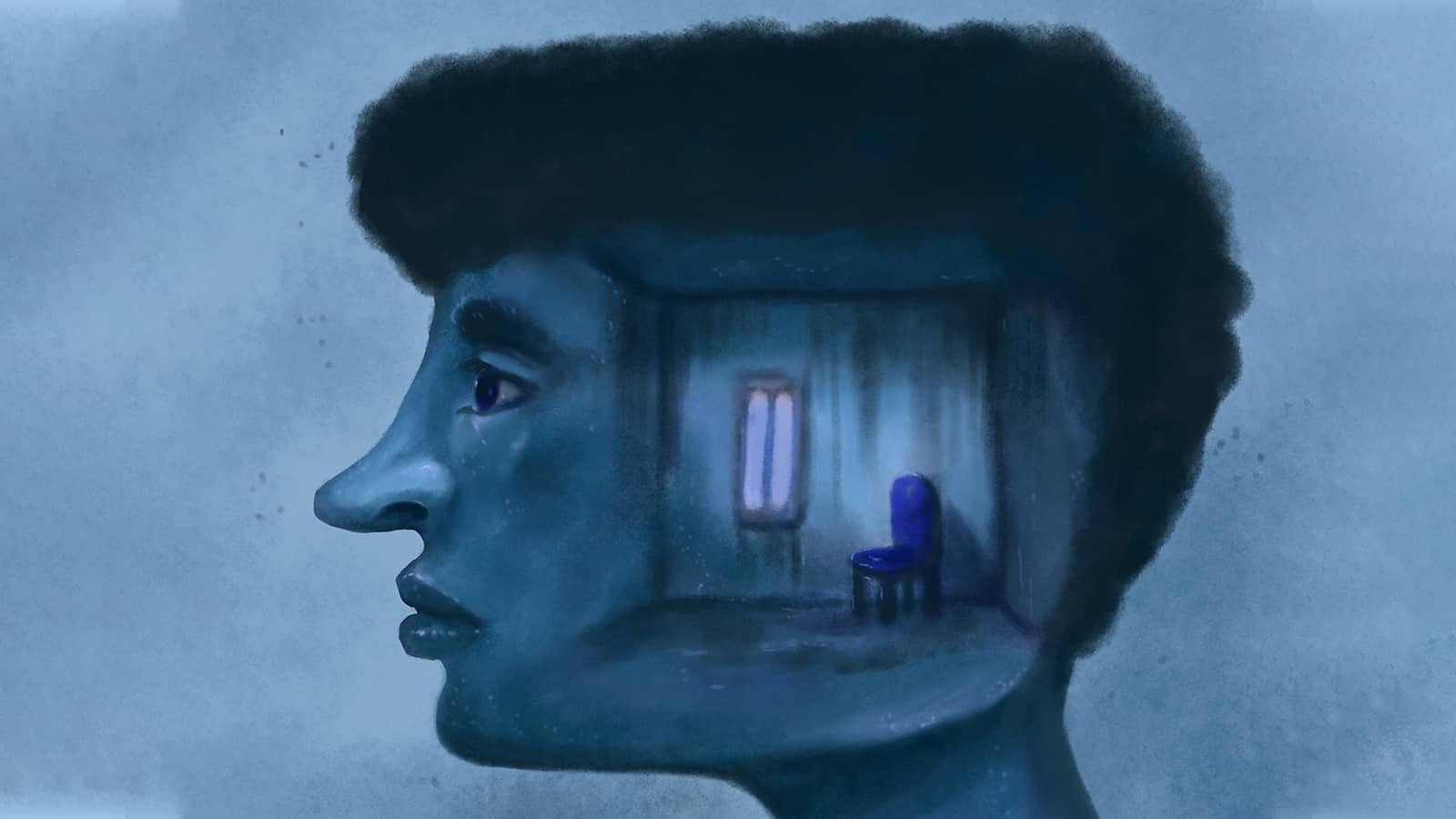Schizoaffective disorder is a combination of mood disturbances that are often seen in bipolar and schizophrenia.
According to the National Institute of Health, individuals with this mental health concern are often misdiagnosed as the medical community tends to lump people into one category or another.
One of the significant issues with schizoaffective disorder is that people can often have such disruptions in their life that they cannot work, have meaningful relationships, and seek help through disability to help survive financially. With each case comes various degrees of severity. One person may have delusions and hallucinations as more of the schizophrenia side comes to the forefront, while another person may have more mania with some paranoia.
Diagnosing this condition is often done over a period of time. The mental health professional must observe the individual in various stages throughout their cognitive challenges. If someone presents with hallucinations, it might be easy to categorize them as schizophrenia, but then the mania might come later.
Because of this disorder’s intricate nature, it’s often tricky to get a diagnosis right away. Thankfully, you can help your medical provider by writing down the things you or your loved one experience. A journal can act as a roadmap to help your provider understand your thought processes and the things that trouble you.
Behaviors of Those with Schizoaffective Disorder
It’s important to recognize what signs or behaviors are indicative of a schizoaffective disorder. While psychosis can be a sign, it can also be an indication of a depressive disorder. Here are the most commonly observed symptoms of schizoaffective syndrome.
 1. Impaired Social Functioning
1. Impaired Social Functioning
A person with schizoaffective doesn’t view the outside world the same as others. They see things around them as well as people as a threat. They may be standoffish because they are afraid of getting involved with them. Additionally, if they suffer from delusions or hallucinations, then it can also play in their social awkwardness.
2. Delusions
Delusions are false beliefs. For instance, a person with schizoaffective disorder may believe they’re able to fly. How many times have you heard of someone jumping off the side of the building to their death? Perhaps, these people didn’t want to commit suicide, but they may have had delusions where they thought they could fly.
Delusions make individuals say and do things that are out of the ordinary. You often hear of people who believe they are God or some other powerful creature, but they are actually just delusional. The word is often used in slang to describe someone who is not thinking clearly.
3. Hallucinations
Hallucinations are another sensation that the schizoaffective person has that the typical person doesn’t. These hallucinations can be auditory, visual, or even come through smell. For instance, a person may hear voices that tell them to do things, like kill someone.
They may see things that no one else sees, like a man standing in the kitchen. It’s as if the schizoaffective person has their own little world where they hear, see, and smell things that no one else around them can.
It all comes from the brain, though some believe that the veil between the spirit world and those mentally ill is a bit thinner. However, there’s no concrete proof of that theory.
4. Impaired Communication
A schizoaffective person may not be able to communicate with others. It’s not because they lack intelligence; in many cases, it’s because they’re on a totally different level. Remember the movie Rain Man that came out in 1988. It starred Dustin Hoffman as the man with schizophrenia.
In the movie, he went on a road trip with his brother, who was not at all familiar with how to handle his disorder. Throughout the show, you could clearly see the challenges of dealing with his mental health, but you also got a glimpse into just how smart he was.
It’s often the same for people in life. They are not delayed, but their thought processes are so different that they often can’t communicate effectively.
5. Hygiene Issues
When a person is severely mentally troubled, it’s often that their hygiene will tell the tale, according to Dr. Melissa Conrad Stoppler, MD. They don’t see the need for things like a shower, putting on deodorant, and brushing their teeth. They can be told and prodded to do these things, but they’re just not that important to them.
There’s no real reason why the hygiene aspects lack in the severely mentally disturbed. However, it’s seen across the board in almost all mental illnesses. With the person who has schizoaffective, they may have 101 other things on their mind and not consider their hygiene needs.
6. Mania
Since this disorder combines bipolar and schizophrenia, it’s not uncommon to have periods of mania. Mania is different for each person, but it can lead them to do things like writing bad checks, spending all their money on frivolous things, and jumping from a building because they feel they have superpowers.
Having a manic period means that you do something out of the ordinary to get you in significant trouble. This can also be even more serious when you add delusions or hallucinations to the mix.
 7. Depression
7. Depression
Depression is very common with bipolar disorder, so it’s often observed in this combined illness. Manic depressive episodes can be unbearable for the individual and their family. They may refuse to get out of bed, shower, eat, or go to work. They lose touch with reality as their depression is so severe that they can hardly function.
8. Long Periods with No Sleep and Extra Energy
Having bipolar is often categorized by having long periods where you get little to no sleep and being overexcited. Though this is classified as a manic episode, there are different components. The person isn’t really doing anything to get them in trouble, but they have so much energy they can’t be calmed down.
Signs of this may include:
- Talking too fast
- Acting like they have ADHD because they have so much energy.
- Being awake for days with no sleep.
Remember, they will crash after going without sleep for long periods, and then the depression will likely come into play.
9. Catatonia
Some people with schizophrenia may have periods where they’re incoherent. It may seem that they’re awake, but they cannot communicate with you. Some will go into a catatonic state that is even more difficult to distinguish.
With catatonia, the person may be awake and able to move their eyes, but their body is frozen, and they cannot speak, according to the National Institute of Health. It’s exceedingly rare to see this condition, but it does happen when you deal with the more severe mental illnesses.
10. Anxiety Disorders
Since there’s so much going on inside this person’s mind, it’s not uncommon for there to be anxiety disorders too. When a person displays paranoia signs, they may be anxious or afraid to engage with people or things. For instance, if someone has delusions and believes that someone is poisoning their food, then they may be too anxious to eat anything.
Another common sign would be where a person has obsessive-compulsive disorder along with schizoaffective. They may use numbers and patterns, and the OCD would cause them to keep more intently repeating these or categorizing things according to these mental demands.
11. Social Isolation
It’s easy to see why someone who is dealing with all this chaos in their mind would want to isolate themselves from others. Social isolation is a big problem. These individuals don’t know how to communicate and always feel like the “odd man out.”
12. Suicidal Ideation
The schizophrenic person often dreams about suicide to end their torment. Also, if they hallucinate, the voices may tell them to take their life or the life of someone else. Sadly, with bipolar lows come to the same issue. The risk of a person with schizoaffective disorder taking their life can be significant, so they must be monitored closely.
Mayo Clinic warns you to seek help for yourself if you have these thoughts.
Final Thoughts on Schizoaffective Disorder
Schizoaffective disorder is undoubtedly one of the most challenging mental health conditions to treat. There is no cure, but some treatment methods can make things better. This person must have a strong support system around them that can notice when things are starting to turn bad.
Since there are often marked periods of highs and lows, managing this mental health concern is often challenging. Though there are no longer asylums where people are locked away with mental health concerns, there are places where those with such challenges can stay long-term. Group homes often become a viable option for those with such severe mental health needs as it’s often exhausting for the family to help for long periods.
Since both bipolar and schizophrenia have components of chemical imbalances within the brain, eating the right foods and getting plenty of exercises can only help matters. Eating foods that stimulate serotonin, like bananas, chia seeds, flax seeds, eggs, tofu, and many others, might help. It’s a challenging condition, but it can be managed.
















